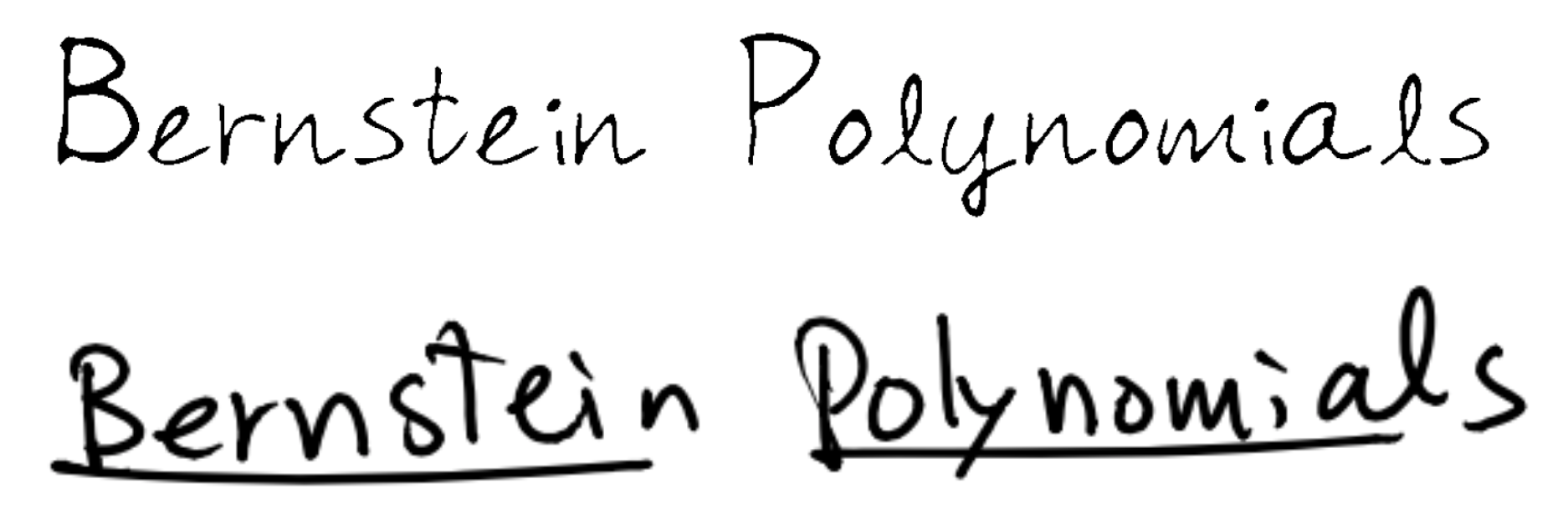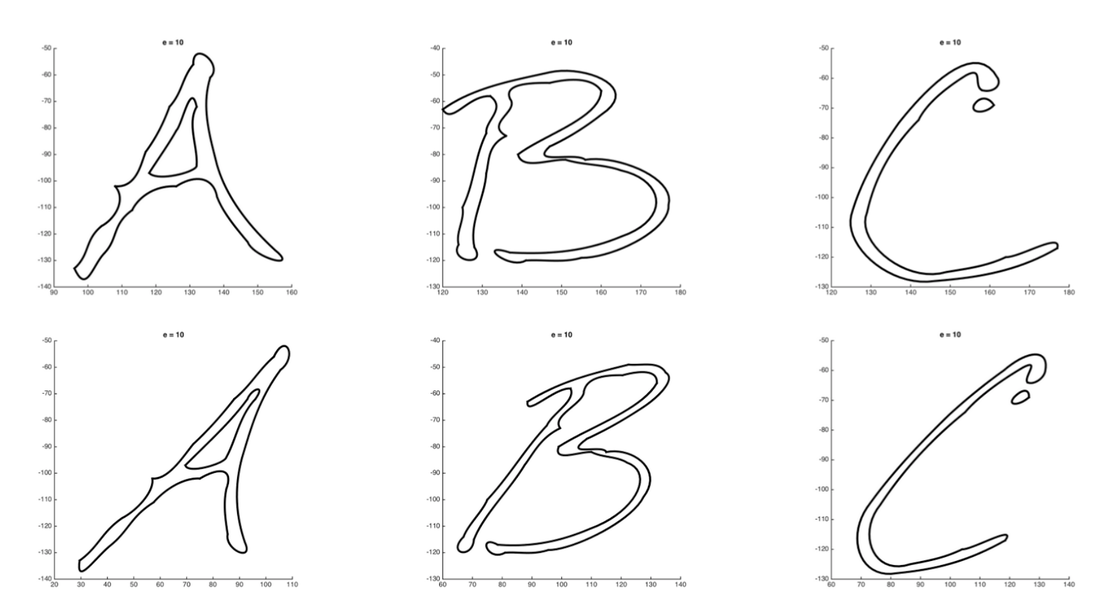Computer Aided Design final project
If you've got it, font it.
Group members: Evan Dvorak, Sihan Lin, Joel Feske
Curve fitting code can be found here.
ABSTRACT
In this paper, we outline a method by which a personal, digital typeface can be generated from a scanned image of a user’s handwriting. From the scanned image, each glyph is segmented and thresholded to produce a binary bitmap image, to which we apply a routine that finds the object’s outside and inside boundaries. Bezier curves are fitted to the boundary data using a scheme that recursively splits any spline that does not meet a userdefined tolerance parameter. Lastly, we provide an example of word processing with the personal font using Python to typeset a sentence into a VRML file.
In this paper, we outline a method by which a personal, digital typeface can be generated from a scanned image of a user’s handwriting. From the scanned image, each glyph is segmented and thresholded to produce a binary bitmap image, to which we apply a routine that finds the object’s outside and inside boundaries. Bezier curves are fitted to the boundary data using a scheme that recursively splits any spline that does not meet a userdefined tolerance parameter. Lastly, we provide an example of word processing with the personal font using Python to typeset a sentence into a VRML file.
Andrew Carnegie’s wellknown quotation, typeset by our word processing program with Sihan’s converted handwriting
Comparing our typeset custom font (top) to a sample from the same user’s actual handwriting (bottom). Whereas the writer may connect glyphs when writing by hand, our current method does not handle ligatures.
A shear transformation is used to create an italicized version of the font.



